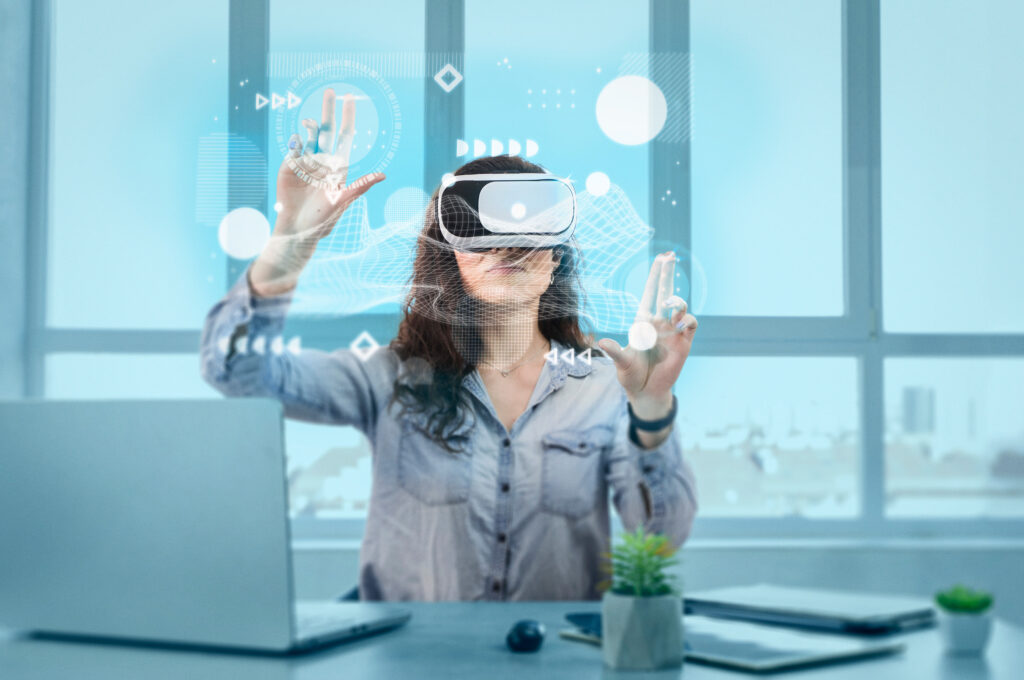
In previous articles, we’ve discussed extended realities (XR) and how they have evolved in the world to become a trend that is steadily advancing with the evolution of technology and devices.
When we talk about XR, we refer to all those interactive tools that help in the process of “shortening” or eliminating the barriers of distance through digitization. Within this category, we can find virtual reality, augmented reality, or mixed reality, to name a few.
Here’s a bit about each one:
Virtual Reality (VR) is a technology capable of transforming our physical and visual environment by transporting us to a simulated reality. In other words, it’s a technology that uses screens to simulate a 100% virtual world, providing an immersive experience in a new world.
Augmented Reality (AR) is a technology that allows us to enhance our view of the real world by overlaying layers of digital information onto it. These layers can be static images, sounds, videos, data or 3D models that superimpose onto our reality in real time. These are often referred to as holograms.
Mixed Reality (MR) is a combination of physical and digital universes that enable natural and intuitive 3D interactions between people, devices and the environment. This new reality is based on computer vision, graphic processing, visualization technologies, input systems and cloud computing.
Now, how can we make use of these technologies in the field of human resources?
The reality is that XR technologies cut across the operations of any organization, particularly in the talent domain and can be applied in areas such as:
Recruitment: XR tools can be used to differentiate your talent attraction process by generating 360° videos that allow you to create interactive presentations of your facilities, making your organizational culture more appealing. Another opportunity lies in assessing potential candidates by simulating and testing the required skills for a job through virtual environments that enable the simulation of operations or the administration of virtual practical tests.
Onboarding: The social isolation caused by the pandemic and remote work has interfered with the social aspects of talent onboarding, such as connecting with people and building teams. Virtual reality offers something you can’t achieve with a 2D video call: presence, the feeling of being connected to others, which supports a sense of belonging to the organization, collaboration and organizational climate. Companies like Toyota offer virtual tours of their locations, allowing new employees to understand the scale of the organization they belong to and feel like an integral part of the operation.
Training: Virtual reality holds great promise for training in soft skills such as leadership, diversity, equity and inclusion, as well as interpersonal skills.
Skills Development: Numerous industries, including manufacturing, aerospace and government agencies, especially in terms of defense, are at the forefront of using VR and AR to develop technical or complex skills through the adoption of models like remote training, the development of digital twins in operation and testing processes through equipment modeling and simulation.
The benefits of using these technologies include improving workforce efficiency and performance, enhancing production quality and collaborating in reducing waste caused by human error in operations.
In summary, extended realities have immense potential for optimizing human resources processes
and the need for their application will only grow as the pace of technological, social and business change accelerates.
Jess Rojas.
Immerse yourself in fresh content, intriguing perspectives and discover new trends.
© Copyright The Magic 2024. All Rights Reserved.